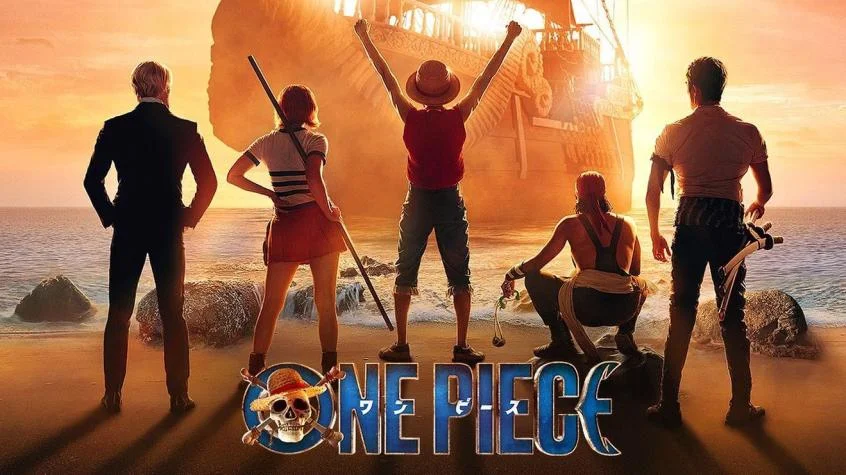In the realm of entertainment adaptation, the journey from beloved anime and manga to the realm of live-action content is a treacherous one, riddled with pitfalls and the looming specter of past failures. Nevertheless, the year 2023 is shaping up to be a standout period for this challenging endeavor. A surprising duo of successes, HBO’s “The Last of Us” and the “Super Mario Bros.” movie, have defied expectations, rekindling hopes for a fruitful future in the live-action adaptation landscape. Now, Netflix, always at the forefront of content innovation, is stepping into the fray with its highly anticipated “One Piece” series, based on Eiichiro Oda’s long-running manga.
“The Last of Us,” which debuted on HBO in January, skillfully transferred the somber, character-driven essence of the 2013 video game to the small screen, defying the historical pattern of underwhelming video game adaptations. The series garnered rave reviews, impressive viewership ratings, and a slew of Emmy nominations, marking a turning point in the medium. Similarly, the “Super Mario Bros.” movie followed suit, achieving box office success despite mixed critical reception. These victories signal a renewed optimism for adaptations from other media.
Taking cues from this revitalized trend, Netflix is poised to unleash its adaptation prowess with “One Piece.” Adapting a revered manga into a successful live-action series is no easy feat, as the platform itself has learned from past stumbles like “Ghost in the Shell” and “Dragonball Evolution.” Not to mention its own mishaps with projects such as “Death Note” and the short-lived “Cowboy Bebop.” Armed with substantial resources and a global reach, Netflix’s ambition knows no bounds, and it appears ready to present “One Piece” as a cultural phenomenon to new, diverse audiences. However, the streaming giant is all too aware of the complexity of handling fiercely loyal fans, cautious stakeholders, and the inherent challenges of translating animated worlds into live action.
To tackle these hurdles head-on, Netflix has taken strategic measures. Eiichiro Oda’s endorsement of the series lends it credibility, while showrunners Matt Owens and Steven Maeda have artfully condensed the first 100 chapters of the manga into eight hour-long episodes. Additionally, Netflix is leveraging the existing 15 seasons of the “One Piece” anime to provide fans with a deeper immersion and capitalize on the buzz generated by the recent Tudum fan event. This calculated approach positions “One Piece” for commercial triumph and aims to satisfy die-hard fans who demand loyalty to the source material. However, the endeavor to meticulously recreate a world designed for two-dimensional storytelling presents its own set of challenges.
At its core, “One Piece” is a whimsical maritime fantasy that pits pirates against marines in their pursuit of a mythical treasure known as the “one piece.” The narrative revolves around Monkey D. Luffy (played by Iñaki Godoy), a young pirate aspirant who dreams of becoming the King of the Pirates. Throughout the series, Luffy assembles a diverse crew, each member harboring their unique aspirations. The cast includes swordsman Roronoa Zoro (Mackenyu), thief Nami (Emily Rudd), chef Sanji (Taz Skyler), and the spirited Usopp (Jacob Romero Gibson), each with their own dreams.
The world of “One Piece” is brimming with eccentricities—magical fruits, fishmen, and snail phones—that challenge the norms of reality. Pilot director Marc Jobst, production designer Richard Bridgland, and costume designer Diana Cilliers have orchestrated a visually captivating blend of CGI and practical effects that seamlessly fuse chaos and creativity. Hand-to-hand combat sequences are masterfully choreographed, offering a dynamic visual experience. This colorful spectacle captures the essence of the coming-of-age journey that “One Piece” embodies.
Yet, while these efforts transport audiences into the fantastical realm, they simultaneously highlight the inherent disparity between the original two-dimensional medium and the three-dimensional world of live action. The uncanny sight of a human-shark hybrid strolling into a restaurant, among other peculiarities, underscores the challenge of adaptation. The acting style, a mix of rigidity and exuberance, can feel awkward and slightly disconnected. Iñaki Godoy’s portrayal of Luffy, while often charming, occasionally results in moments that linger a tad too long, invoking the stillness of a frozen frame. This predicament raises a crucial question: If the pinnacle achievement is a replication of the original, whether near or far, what unique facets does the live-action “One Piece” bring to the table?
Amid these deliberations, “One Piece” not only reflects the uneven history of anime adaptations but also aligns with some of Netflix’s most triumphant narratives. Shows like “Wednesday,” “The Witcher,” “The Sandman,” and “The Umbrella Academy” are built upon established intellectual properties, garnering immense popularity while maintaining a broadly appealing quality. They effortlessly facilitate binge-watching and cater to a less demanding audience palate. However, true innovation often remains elusive within these confines. The overarching goal here is preservation—honoring the essence of the source material. After all, as the show’s protagonist, Luffy, would assert, all aspirations hold value, so long as one remains steadfast in pursuit.
In this bold journey to adapt “One Piece,” Netflix is embarking on an adventure that encapsulates the challenges, opportunities, and intricacies of transforming beloved anime and manga into live-action brilliance. As all eight episodes of “One Piece” are now available for streaming, audiences can decide for themselves whether this adaptation successfully bridges the gap between two dimensions and adds a new layer of storytelling magic to the iconic world of Luffy and his crew.




